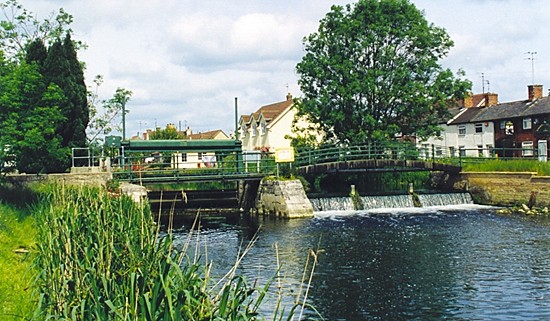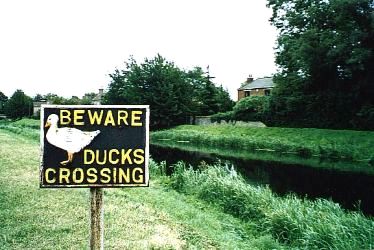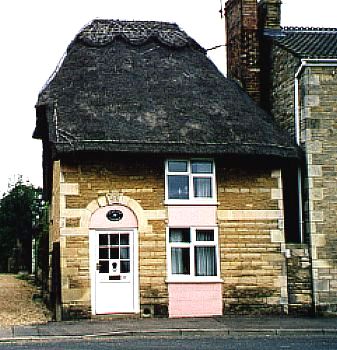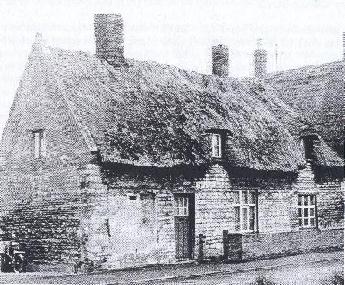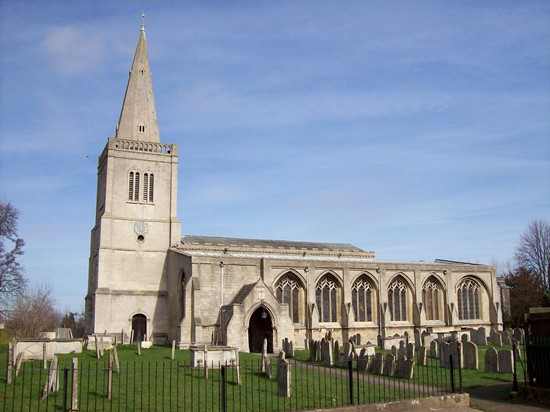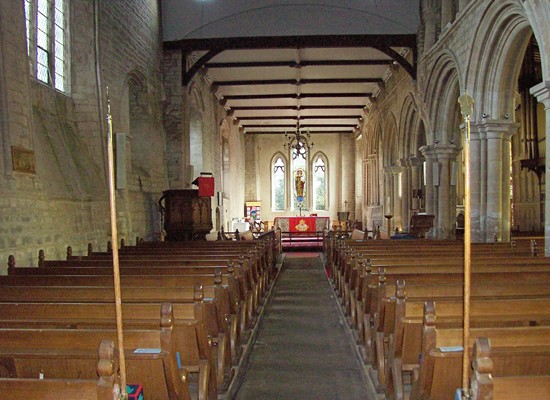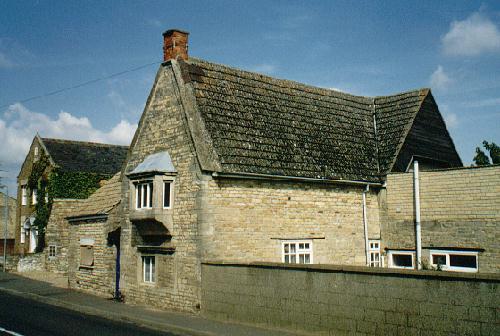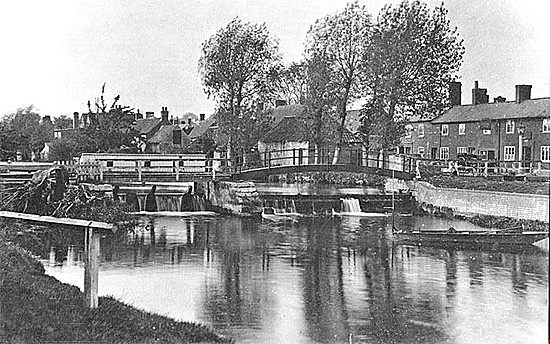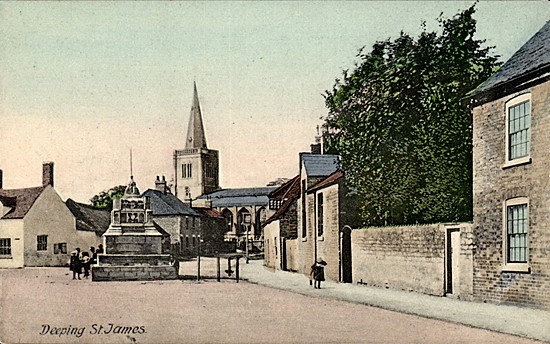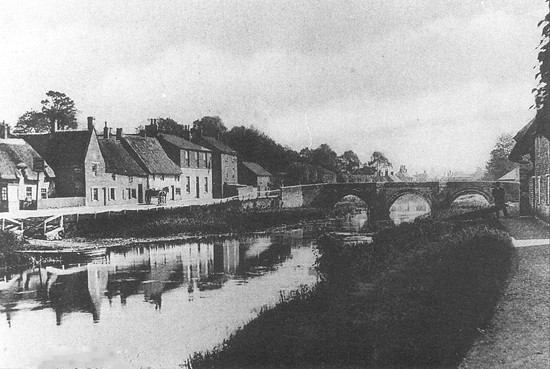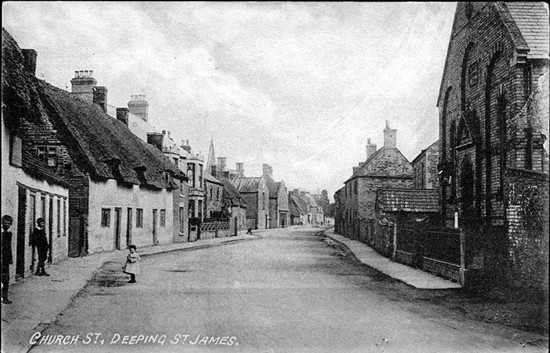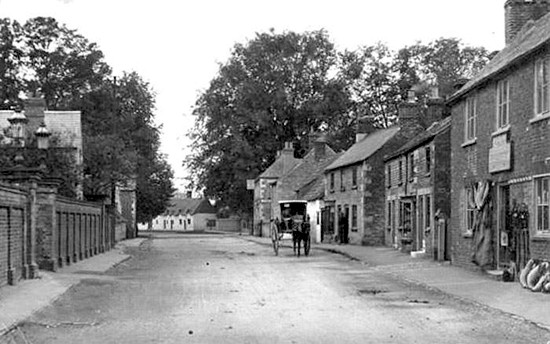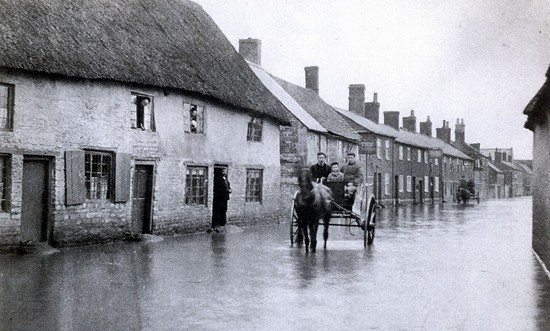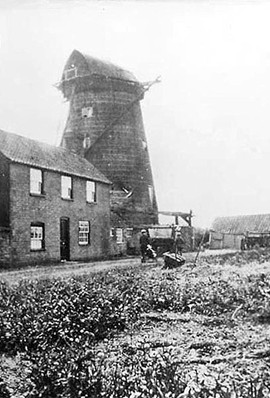|
Deeping St James
Many visitors to South Lincolnshire miss Deeping St James, which straddles the road alongside the River Welland south of Bourne, because it lies off the main A16 road between Stamford and Spalding. But a diversion can be rewarding for this village has one of the most beautiful riverside walks in the county. The High Locks provide a picturesque setting along this stretch of the river which is also a favourite haunt for anglers. There has been a footbridge at this point for centuries and the present iron structure was built in 1905 and strengthened in 1949 because it was showing signs of wear. But that too is rusting and fast becoming unsafe and is also considered to be unsuitable because it is not wide enough for wheelchairs and may be a road hazard for cyclists and pedestrians who encounter the main road on leaving at the far end. A new bridge which would be twice as wide with a design that would eliminate any road safety hazards is currently being planned. The river runs alongside the main street and both banks are accessible for much of its length with a pavement on one side and a footpath on the other. There was some concern during the 19th century about the safety of the footpath after John Robert Lambert accidentally fell into the water and drowned. The Stamford Mercury subsequently reported on Friday 12th March 1875: "As further proof of the necessity for an immediate improvement in this locality, it is said that one man who has resided near the river there for many years has rescued eleven persons who have fallen in." The footpath is now much improved and quite safe and has become one of the most pleasant walks in the district, especially on a sunny day, taking in a mix of properties with differing architectural styles and a wealth of stone houses dating back to the 18th century, a set of locks and a quaint crossing erected by villagers to safeguard ducks from passing traffic.
Ducks that live on the River Welland at Deeping St James are important to the villagers who have received official permission to erect this sign at the roadside at the point where the birds like to cross. A tiny fairy tale thatched cottage at Deeping St James, looking like a slice of cake. The initials on the plaque over the door are probably those of the man who built it, together with the date and present name of the property: H.S. 1819 Clematis Cottage. Water mills on the River Welland between Stamford and Market Deeping made it difficult for commercial traffic and merchants appealed to Queen Elizabeth I in 1571 to construct a new cut which would make the river navigable to the sea. The work was approved in 1620 and subsequently brought much prosperity to the Deepings with wharves, landing stages and jetties to handle cargoes often brought in by convoys of five barges at a time, each carrying twenty tons, and drawn by horses along the tow paths that can still be seen today. During the 19th century, the Baker family of Deeping St James owned five barges which were built in the yard of their house overlooking the river to the west of the bridge and the barge owner had a special protruding window built into the front of his house in order that he could sit in comfort and view his barges as they came along the river. Near to the High Locks and overlooking the river is the Crown and Anchor public house, built of red brick and blue slate and dating back to the mid-19th century and so named because it was either built on Crown property or as a symbol of loyalty to the monarchy while the Anchor undoubtedly refers to the boating tradition along the River Welland nearby. There was an ale house on this site for centuries but the present pub was built in 1850. There have been many landlords although Arthur Penney, who was also a butcher and carpenter, kept it in 1871and his family were tenants for 75 years, the last being his daughter, Clara, who remained there until retiring in 1946. Tales abound in the village that more than one man was drowned after leaving the Crown and Anchor on dark and stormy nights and lost their footing as they staggered home across the river footbridge. Another public house that once stood nearby was the Indian Queen, an old timber framed, stone and thatched property that was occupied by George William Gee, a harness and saddle maker in the early 19th century who also ran a brewhouse from the premises. Subsequent landlords also had other occupations and John York, who was mine host in 1881, ran a drapery and greengrocery business as well as the pub. The building was badly damaged by fire in October 1897 but re-opened after repairs and the last landlord was James Rippon who retired in 1910 when it became a private house. The property was completely rebuilt in 1973 when old papers found in the roof space revealed that the cottage was 500 years old.
The church has an array of large Decorated windows but inside is a great surprise: a long transitional south arcade, seven bays long, of such grandeur that it has been described by Nikolaus Pevsner in his description of the church in Buildings of England: Lincolnshire as "astounding". This is the nave of the priory, botched up, knocked about but quite magnificent. Near the pulpit is a walled up arch, probably 11th century, and could have been intended as the entrance to a transept, a chapel or a covered way leading to the priory, while the pulpit itself was given in 1873 in memory of the Rev J M Cooper, by his widow. There is also a comparatively new Roman Catholic church in the village, Our Lady and St Guthlac, officially opened in May 1969, a modern building which replaced the one in Chapel Lane. It was built at a cost of £25,000 and designed as a neighbourhood centre, the nave having a mono-pitched roof supported by a steel frame with laminated timber roof beams and an electronically operated bell built into a steel tower while the outside of the building is finished in hand-made facing bricks. The baptismal font from the old church was brought in and renovated and there is room for 200 people. The previous church was once the private chapel of the Waterton family who lived at the Manor House in Deeping St James from 1877 until the Great War of 1914-18. It was a small building, built in 1880 in the grounds of the hall, and in the 1920s it became a school run by a religious brotherhood. When they left, it was used as an outhouse before becoming the village's Roman Catholic church.
REVISED JUNE 2016 See also Deeping funeral hudd Deeping Lockup Cave Adullam chapel Deeping Gate bridge St James Deeping signal box Waterton family River Welland Deeping St James Aquatic Sports
Go to: Main Index Villages Index |
||||||||||||||||||||||||||||||||||||||||||||||||||||||
